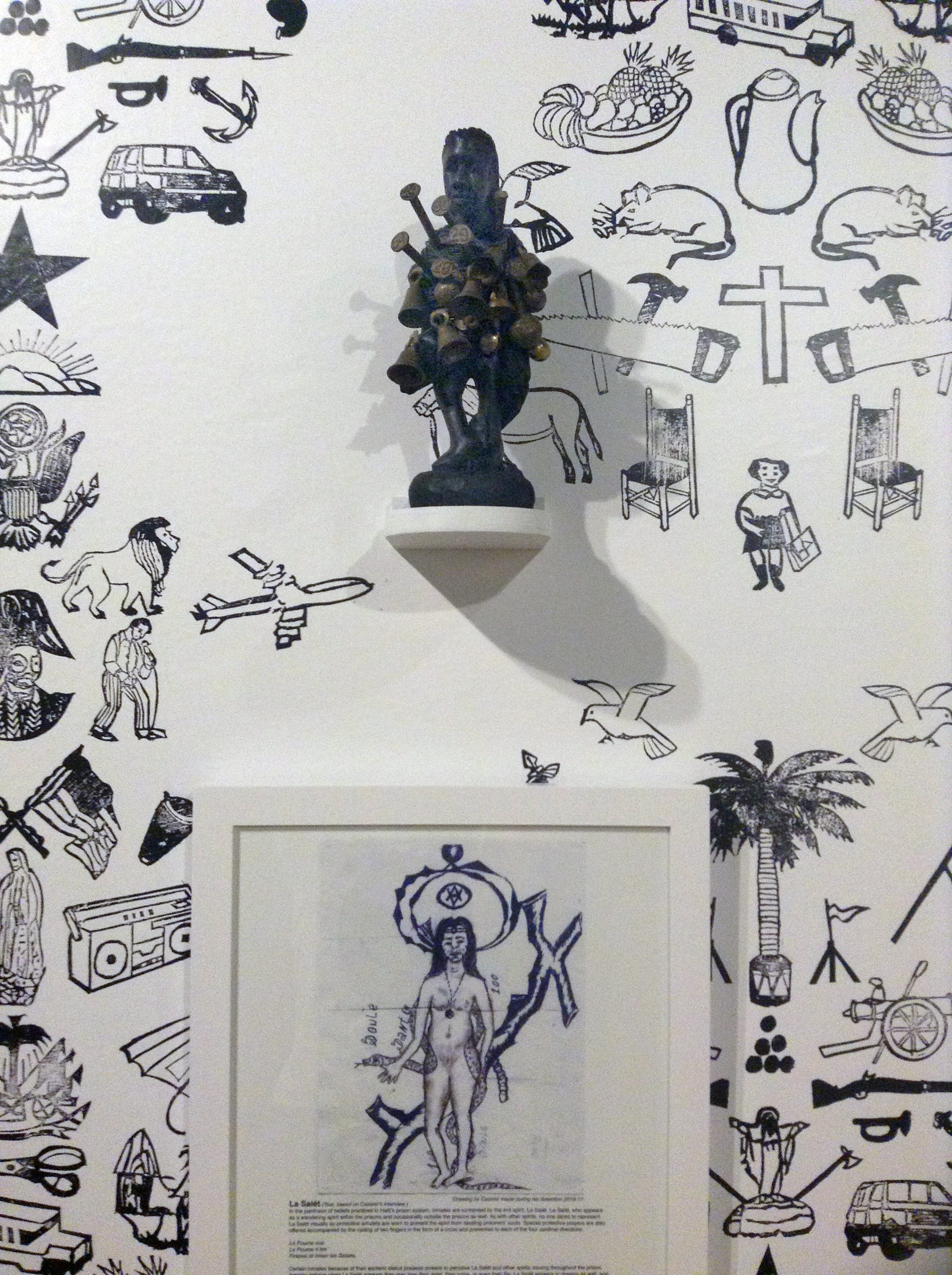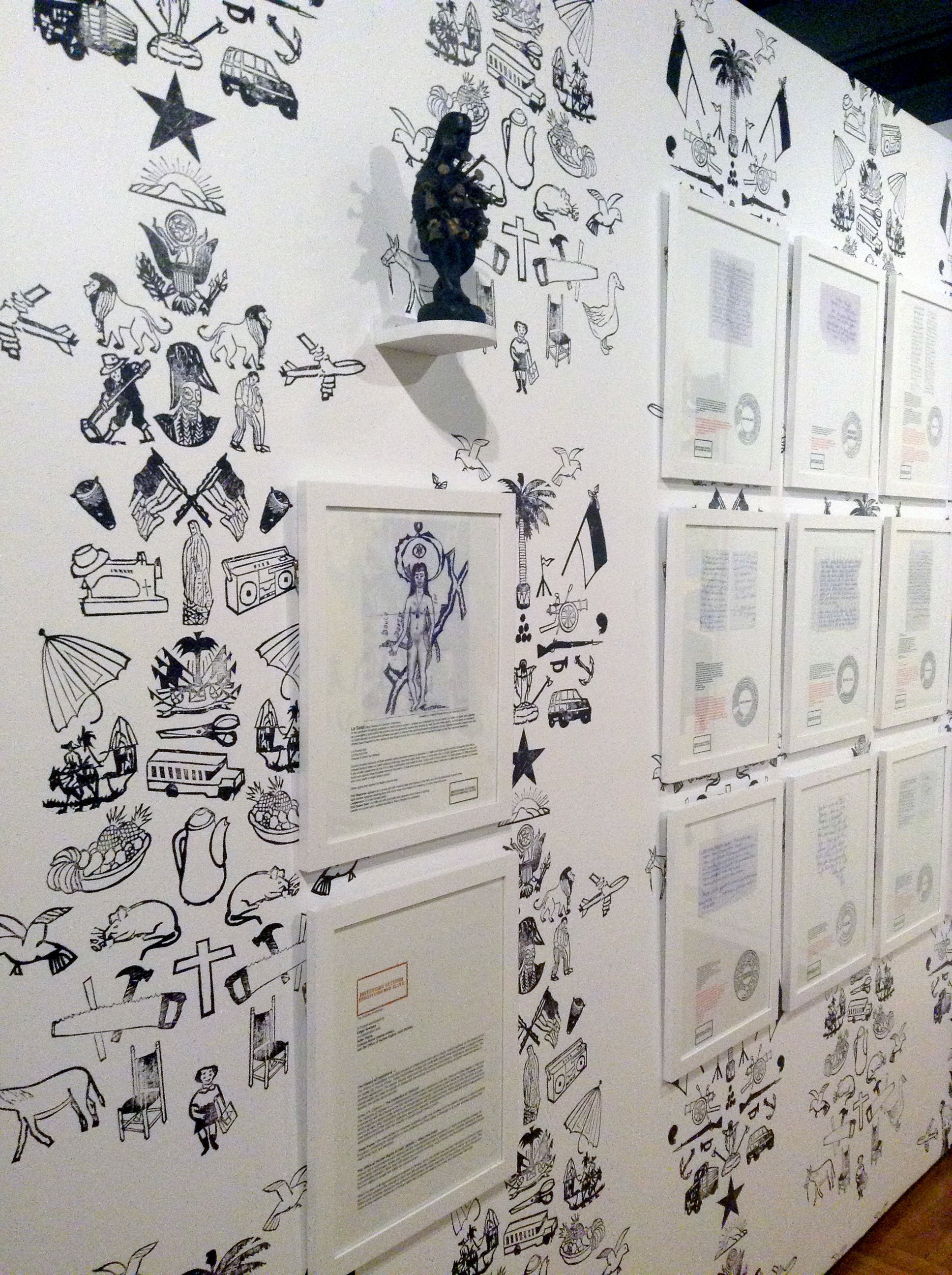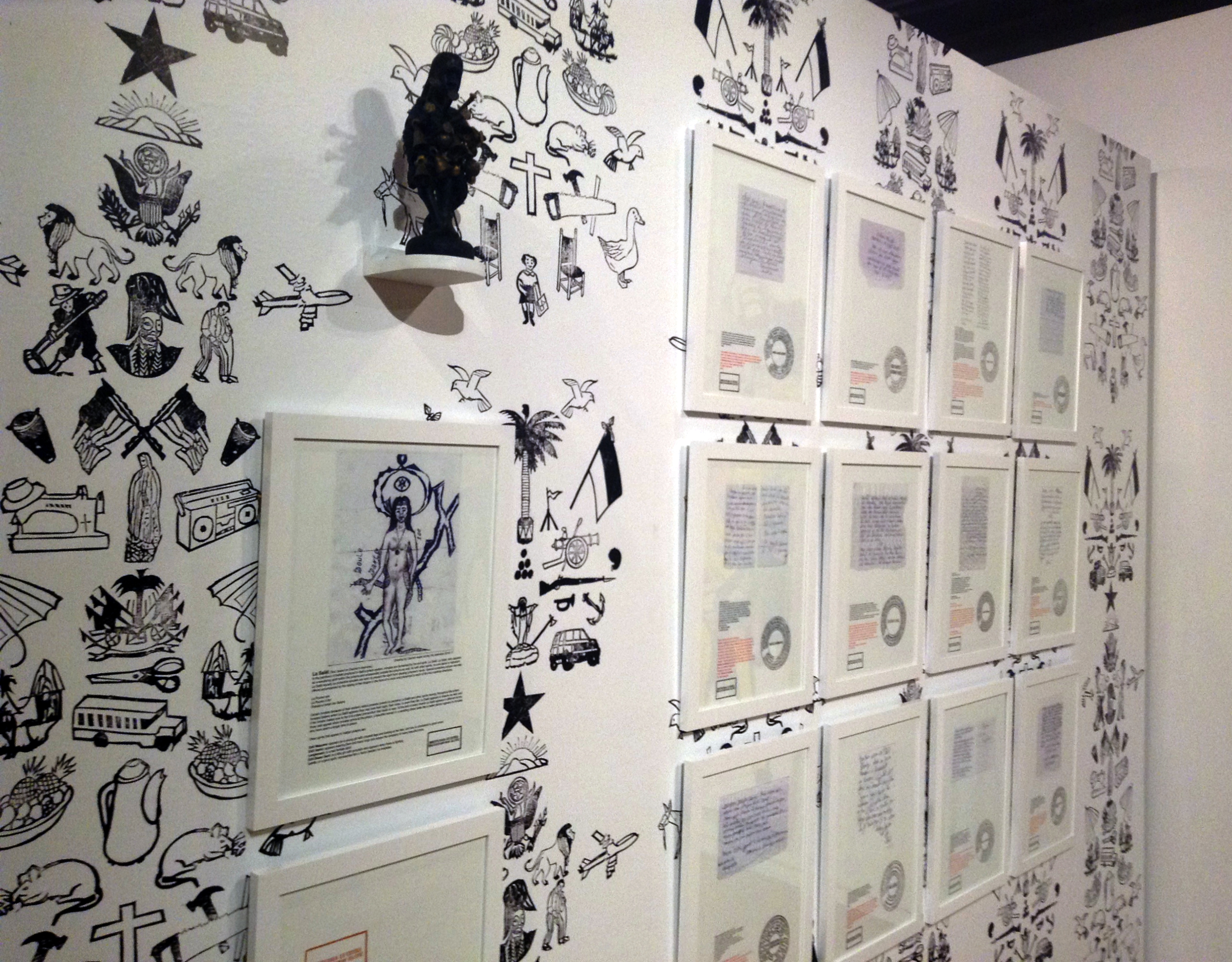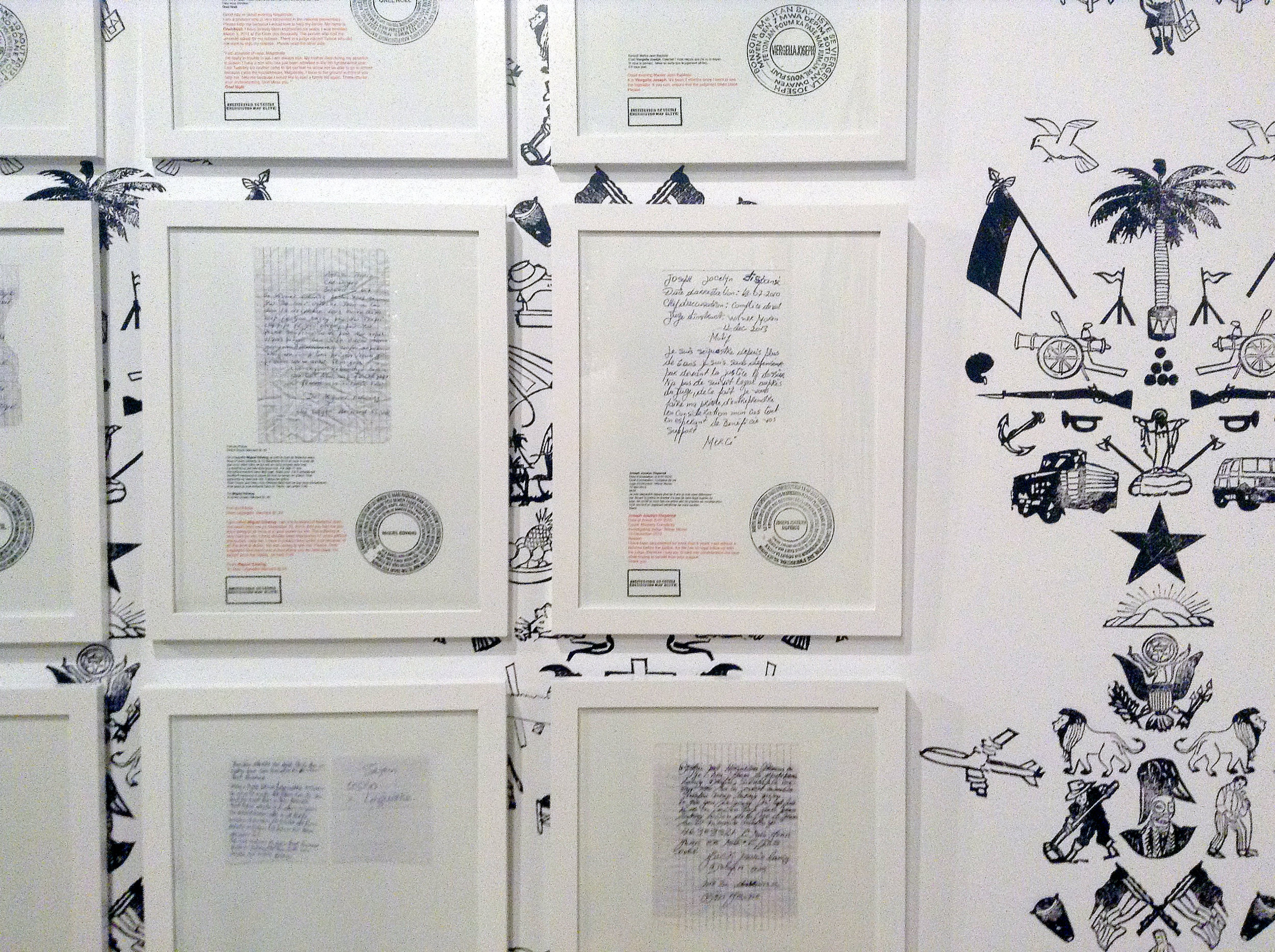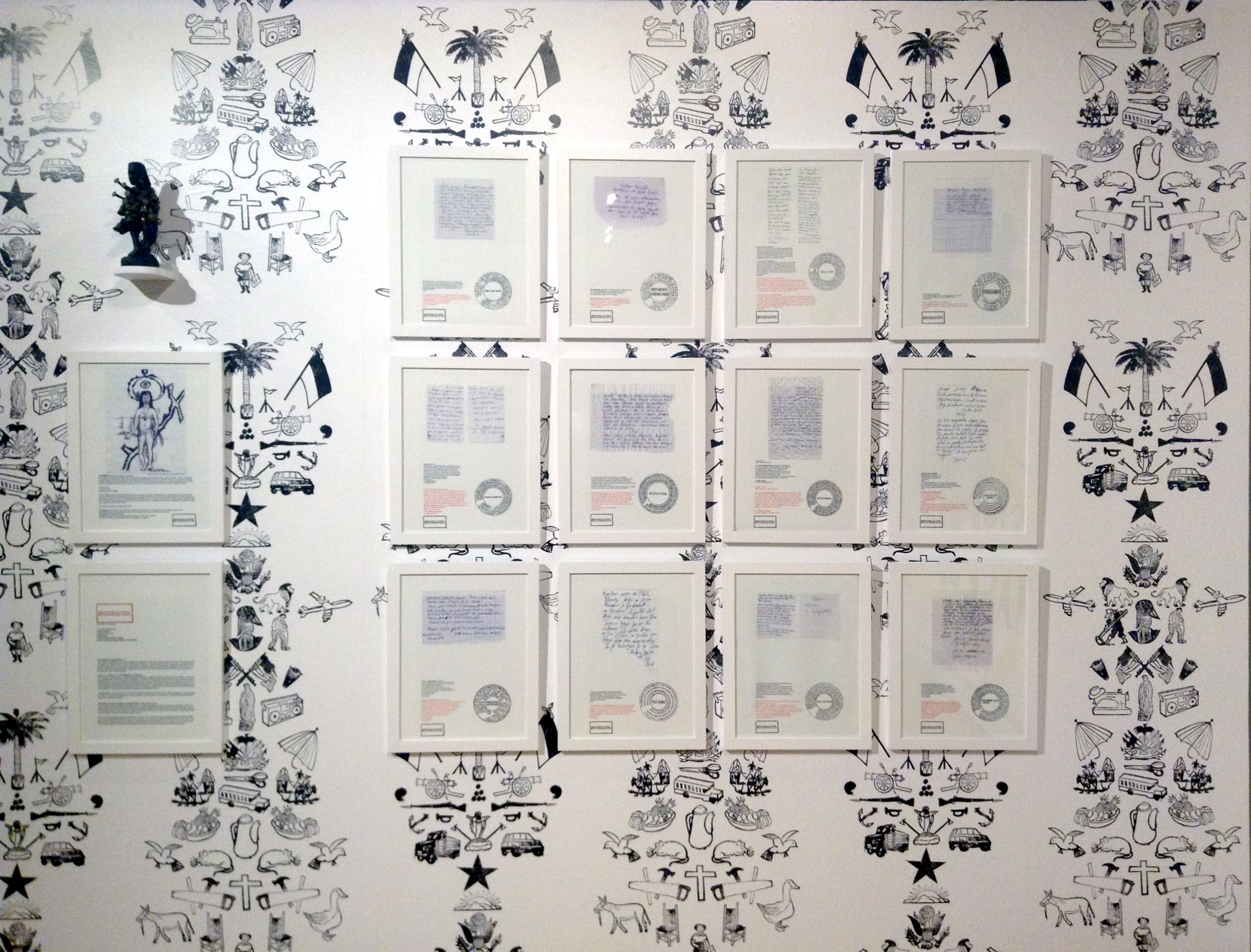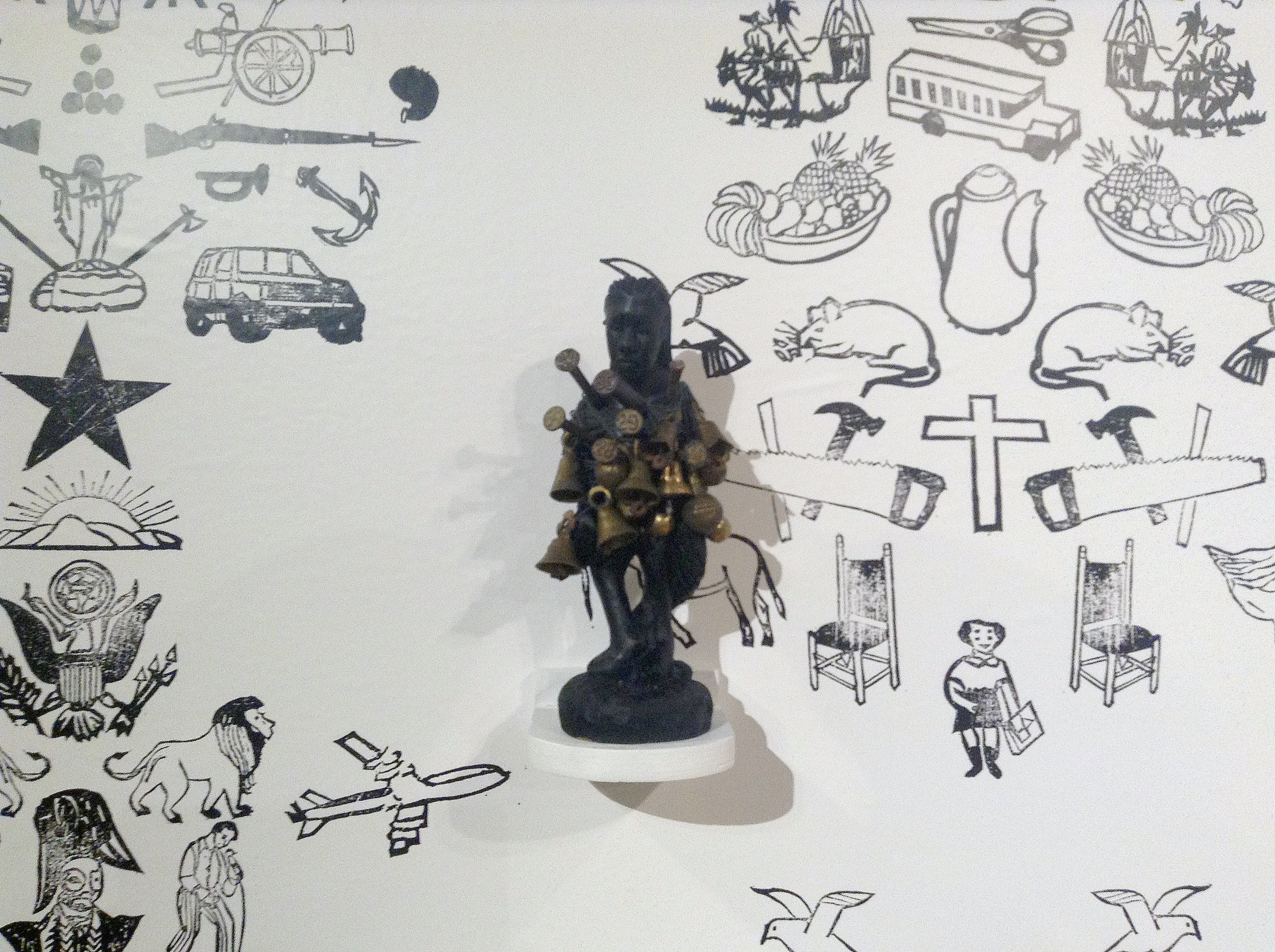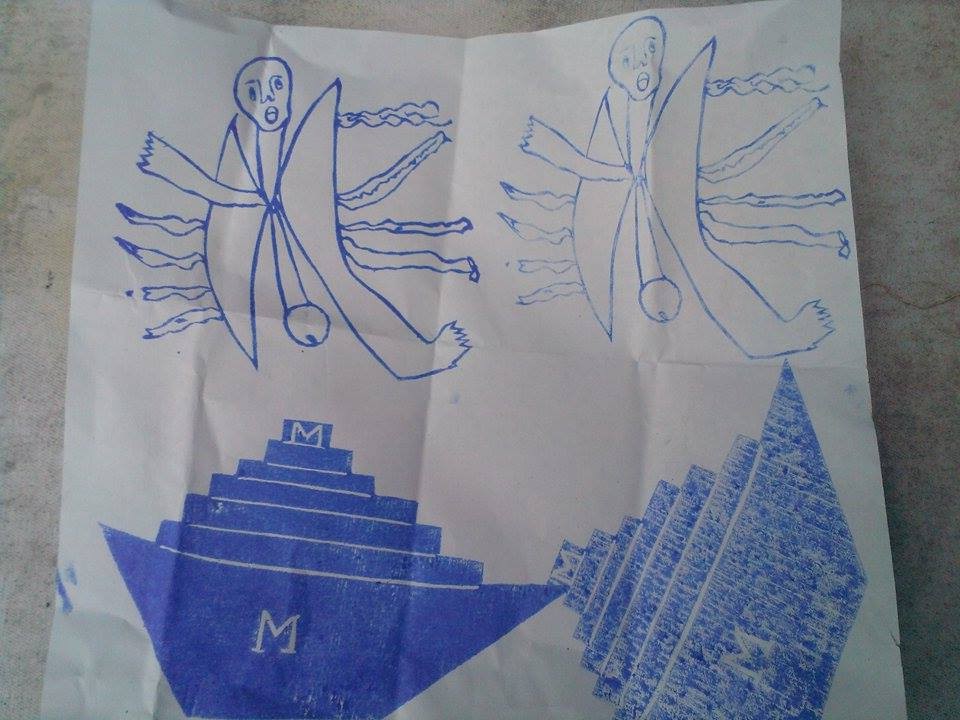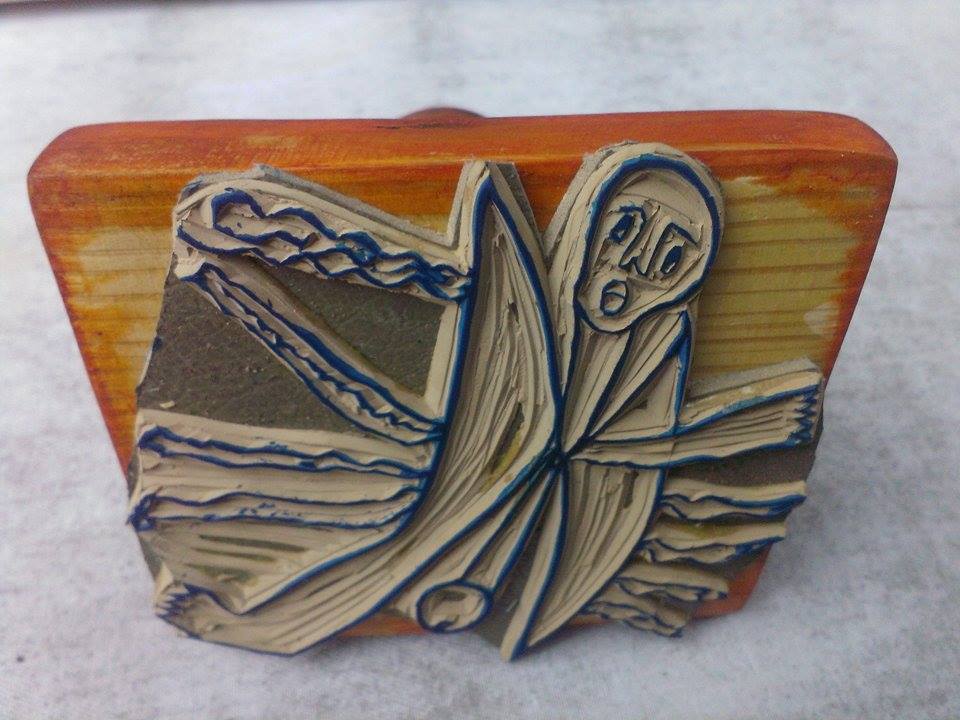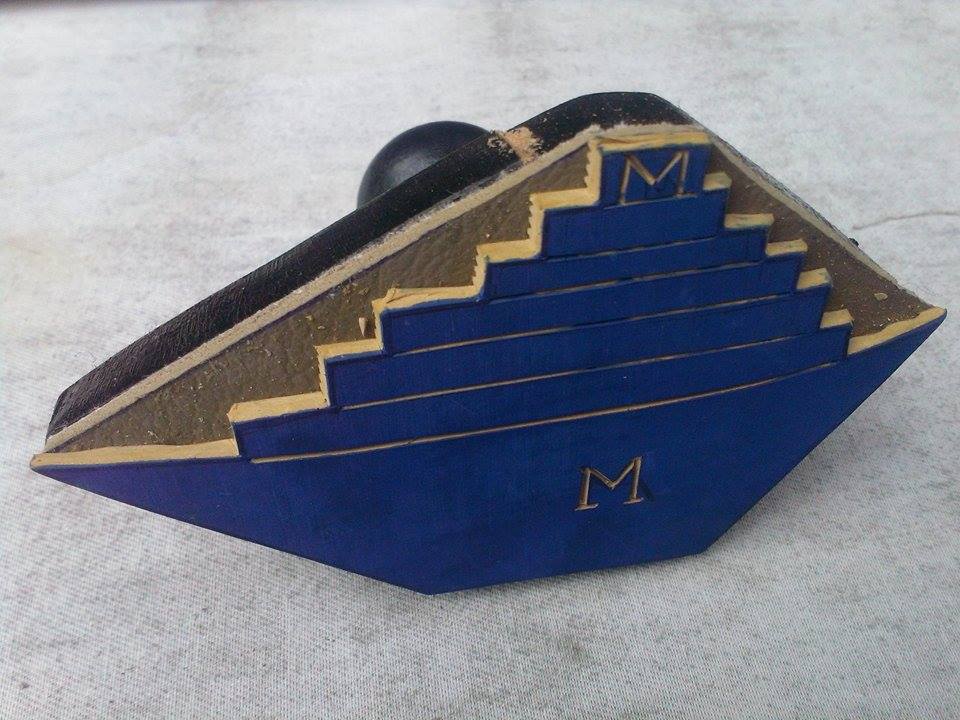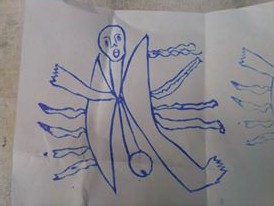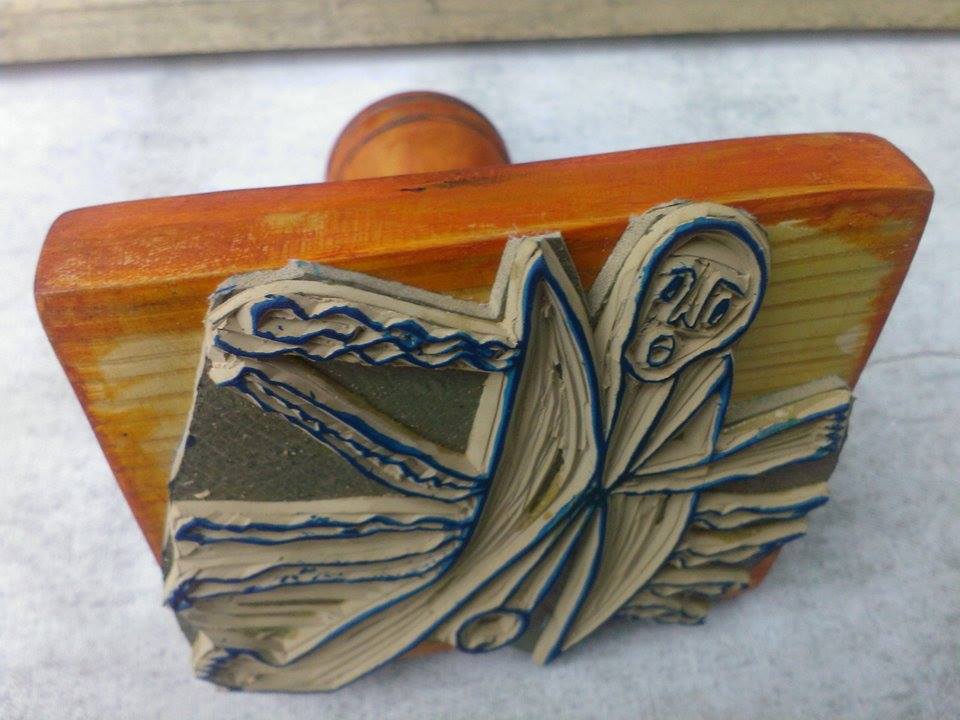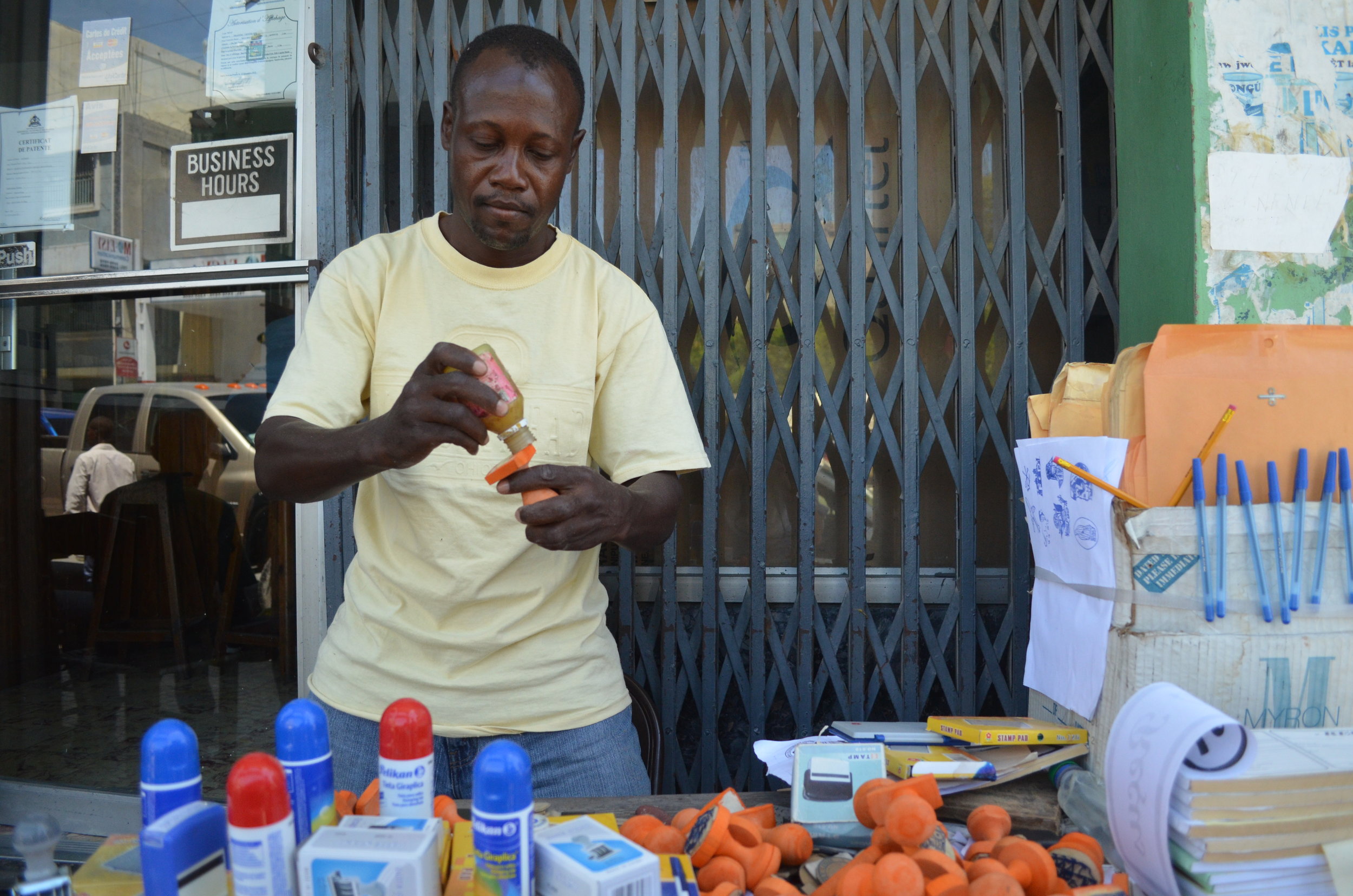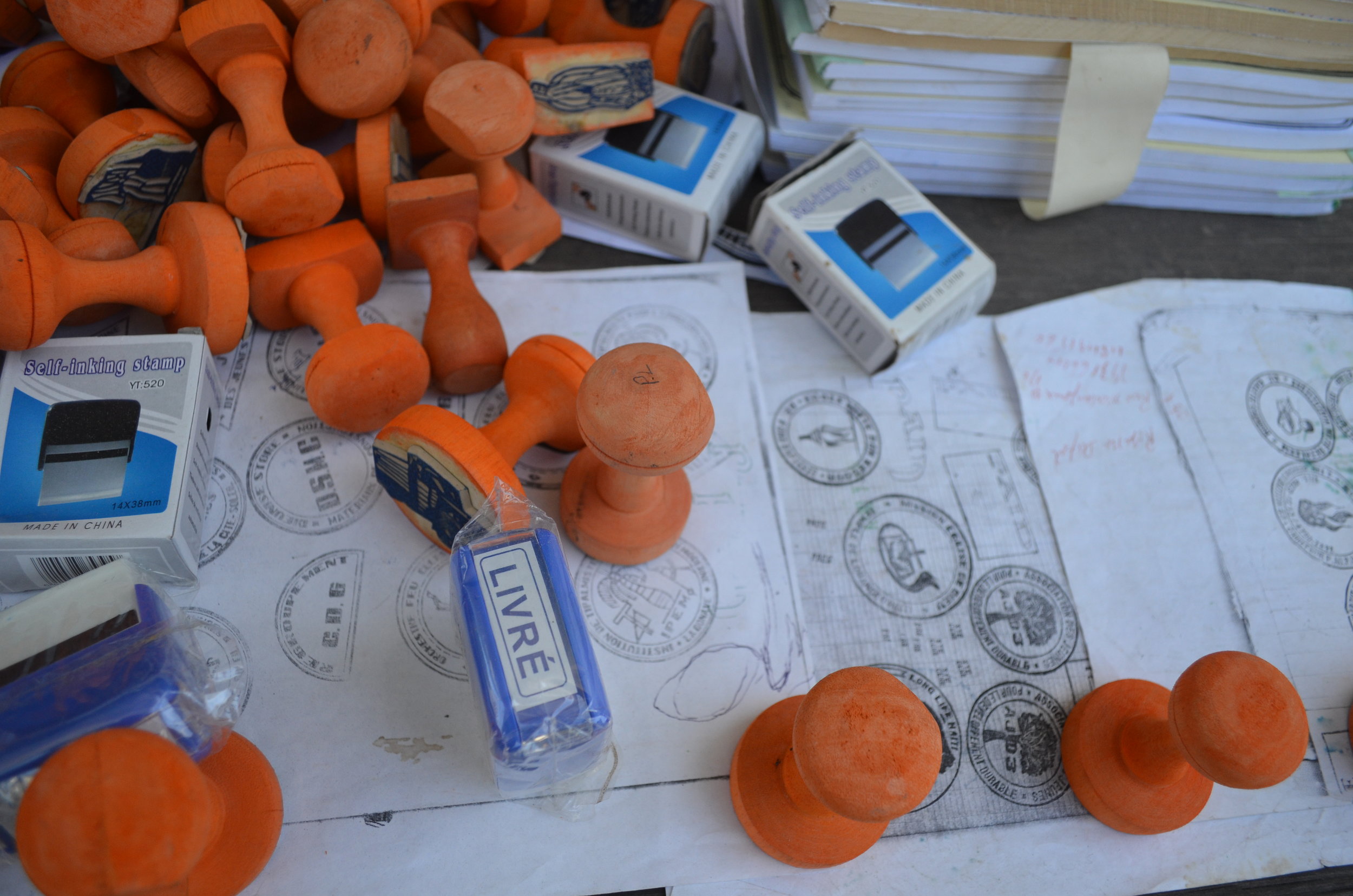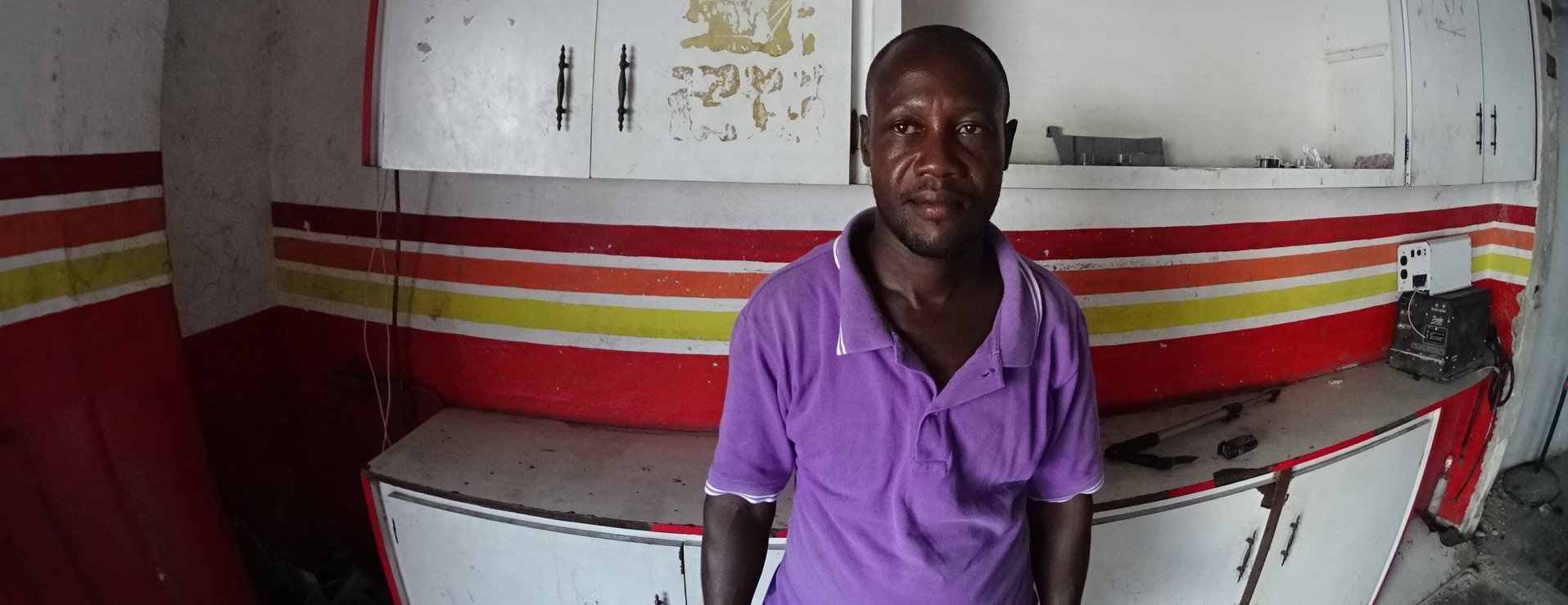
The story of institutions series:
Institutional Histories ///
Institutional Histories is a project initiated in collaboration with rubber stamp makers working on the streets of Haiti’s capital city, Port Au Prince. These handcrafted stamps are made with simple tools and possess a uniquely refined aesthetic appearance. The stamps visually depict and identify customer’s businesses, institutions, and services. The stamps satisfy the need for people to distinguish themselves and their livelihood using symbolic visual narratives offered by the rubber stamp process.
series nº1: Oblivion // a collaboration between Adler Pierre, Calicien Banel, Office of Human Rights Haiti and Edgar Endress,
The Institution of Oblivion is a multidimensional collaboration established with the Office of Human Rights in Haiti and is concerned with the inhumane pre-trial detention of inmates. Haiti’s judicial system lacks the right of habeas corpus, which requires a person under arrest to be brought before a judge. Individuals accused of a crime fall victim to a precarious system, often descending into institutional oblivion with no legal recourse. Haiti’s legal and prison system is an overt expression of the country’s underlying economic disparity, emphasized by the fact that the entire state system is administered in French while the majority of people speak Haitian Creole.
“Petite Papier” are notes written on whatever available paper that inmates hand to visitors, lawyers, or anyone exiting the prison, screaming for recognition of their existence and their rights, a message-in-a -bottle seeking anything that might bring hope and salvation.
The Office of Human Rights in Haiti (BDHH) /// Biwo dwa moun
Human rights organizations have denounced the unacceptable pretrial conditions of Haiti's incarceration centers. Inmates dying from hunger, illness and maltreatment remain unaffected by political announcements claiming to relieve the untenable situation. More than 500 cases are currently pending, not to mention the thousands of detainees whose files are stalled or simply lost within an unjust system.
Since the start of its legal assistance program in October 2015, the BDHH has handled 188 cases of arbitrary detention and has obtained the release of more than 66 individuals, sometimes detained without trial for up to a year. The BDHH aims to further denounce the system’s arbitrariness; demand reparation for the victims; and force the government to end massive violations of human rights that undermine Haiti’s rule of law and democratic standing.
The story of institutions Nº0 : / in collaboration with Pierre Adler
Project developed for the Ghetto Biennial
The project originated in the context of craftsmanship that exists in Port Au Prince—artists who make rubber stamps. In downtown Port Au Prince one can find many rubber stamp artists. They sit in front of small tables, strategically located in the mix of the civic quarters, between photographers for identity cards, with typewriters ready to fill out forms. They handcraft stamps for customers using a razor blade with precision and craftsmanship. On the table is also a notebook where the stamp is tested for customer approval. The notebook then becomes an archive of years of stamp production.
The project “The story of institutions” explores the meaning of the rubber stamp as a symbol of social legitimacy and as political metaphor. By inventorying and commissioning rubber stamps, the project emphasizes the mechanism of participation, integration, and validation that the stamp creates. The stamps play on popular culture to create an object that is symbolic and accessible, by being highly communicative, in a way that the masses are not excluded. Rubber stamps are a form of compressed story, microcosms of meaning, which creates cultural and social expectations. Stamps are central to the construction of an institution and the validation of processes.
The project was initiated by archiving existing stamps that stamp makers have compiled in their notebooks. The project is to develop new narratives based on conversations among the collaborators of the project (artists from Resistance, the rubber stamp maker, and other people), the idea is to create stamps that can serve multiple graphics purposes, graffiti, animation, alternative seals, comic panels--rubber stamps as intervention.



